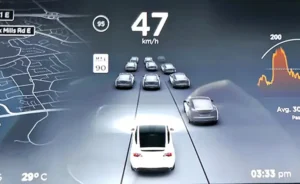
Renewable energy plays a crucial role in the energy security of the United States. Generating electricity through solar installations is the fastest-growing segment of “green” energy
The substantial consumption of renewable energy ensures that America can reduce its dependence on energy imports and the use of fossil fuels. Experts predict that renewable energy consumption in the USA will continue to rise until 2050.
Solar generation capacity is set to increase by 25%
According to the Short-Term Energy Outlook reports by the U.S. Energy Information Administration (EIA), overall electricity generation capacity in the country will increase by 3% in 2024 and by 1% in 2025. This growth will primarily be driven by renewable energy sources. In 2023, solar, wind, and hydroelectric power combined accounted for approximately 21% of electricity generation in the USA. It is expected that by 2025, this figure will rise to 24%.
Solar energy is the driving force behind this energy transition. The EIA stated that in 2024, solar energy will provide 41% more electricity than in 2023. If last year saw a production increase of 19 GW, this year’s increase could exceed 37 GW. According to EIA forecasts, total solar generation capacity will increase by another 25% in 2025.

Clean energy is cheaper
Currently, the majority of solar energy in the world is generated by China, India, and the USA, followed closely by Middle Eastern countries. Reduced energy costs and decreased harmful emissions make them an attractive option for many regions.
Despite significant initial and operational investment, clean energy is cheaper in the long run and reduces dependence on fossil fuels. It’s also worth noting that continuous technological advancements, development of more efficient solar panels, improvement in energy storage systems, and optimization of installation and maintenance processes contribute to increased production capacity and efficiency of solar farms.
Undoubtedly, increased demand will lead to increased production and development of these technologies, while costs will decrease. For example, from 2010 to 2019, the cost of solar photovoltaic elements fell by 82%.
Many well-known companies are also interested in this area. For instance, Tesla is involved in the development and production of energy storage, such as solar panels shaped like roofing tiles. Microsoft has entered into an agreement with Brookfield to develop renewable energy projects with a capacity of approximately 10.5 GW. As part of this collaboration, the companies will build wind and solar power stations in the USA, Europe, and other regions between 2026 and 2030.

California leads the way
California produces more renewable energy (according to the California Energy Commission, over half) than any other American state. Since 2005, the volume of renewable energy in the region has more than tripled.
Construction of the largest solar power station, Solar Star, began in 2013 and was completed in 2015. The station covers an area of approximately 13 square kilometers and houses 1.7 million solar panels, which can supply electricity to around 255 thousand households. The solar power station has a capacity of 580 MW.
Development and commissioning of projects continue. For example, the CCIP Solar Park will utilize the abundant solar radiation of the California desert to generate electricity using advanced solar technologies. The park will be equipped with a wide range of state-of-the-art photovoltaic (PV) panels. With a project capacity of 100 MW, CCIP Solar Park will play an important role in meeting growing energy needs – tell us one of the partners of company Stepan Chiurcciu.
Through such projects, California authorities plan to transition the state entirely to alternative energy sources by 2045.














